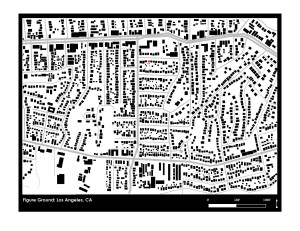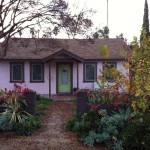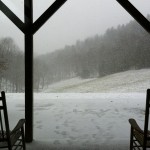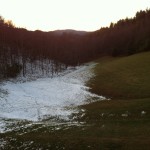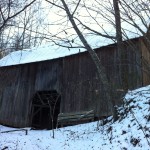A Search for A Place
Twenty-two years ago, I had just married, was graduating college, and on a search for a place to live. I imagined myself settling into family life and raising children in one place, wherever that place might be. Instead, I moved through six communities as I raised three children, went back to school, divorced and began a new career. I wouldn’t have predicted any of it. And I am grateful for all of it. Below is an excerpt from the first chapter of Making Home: from the Sticks to LaLa-Land, a journey through places, relationships and self-awareness to find where I fit in.
(I’ve changed some names to protect privacy. And though I have the best intention of accuracy, memory is tricky. So many times I’ve shared memories with my sister and brother of an important event in our childhood only to discovery they remember it differently than I do. So, this is my story, through my perception of it.)
Buladean, NC
1992
Appalachia was nature and romance. I had hiked North Carolina’s steep range in college. The hardwood tree canopy caught fire with color in fall and thick beds of rhododendron turned lavender and pink in spring. Its beauty moved me.
As a newlywed, I loved living in Chapel Hill. But I didn’t mind the idea of moving somewhere new. I was born and raised in the city of Columbus, Ohio, but nearly every place I spent time captured my heart: Ohio’s Hocking Hills, North Carolina’s Outer Banks, Florida’s Sanibel Island, Manhattan, Chicago, Paris, the French Alps, Caracas, Bimini. I thought I could be happy anywhere. So, when Matthew said he dreamed of living in the mountains, I was game.
I wanted to write. When I read Steinbeck’s The Grapes of Wrath in high school, I found my means of self-expression. My dream was independent of location; Matthew’s was all about the where. We decided to move while we were still young and free of responsibilities.
“So you’re going to leave The Persian Carpet to make furniture in the mountains?” Leu asked. He and Lisa sat across from us in a wooden booth. Leu worked with Matthew selling Persian carpets for good friends. Lisa was my college roommate. We were in Linda’s, a basement bar across the street from the University of North Carolina. Franklin Street was the social center of Chapel Hill, and we frequented Linda’s since it opened three years before.
“Yep,” Matthew said. He took another long sip of beer.
“I’m going to find a newspaper job to support us while he starts his business,” I said.
“In the Appalachians…?” Leu asked again.
“Sure,” I said. “Why not?”
“Because you have a job here,” Leu said to Matthew. He turned to me. “Because there’s nothing there.” He was poking fun, but he also had a good point. In 1992 people were having a hard time finding work. It was the first time since the Great Depression that a generation was not expected to out-earn their parents. I would graduate in a few months, with no job prospects. The Appalachians were not known for employment or culture.
“I want to do it while I’m young,” Matthew said. “I don’t want to look back in 60 years and realize I never did what I wanted to do.”
“Wow,” Lisa said. “I admire your courage… I don’t know if I could just move somewhere I didn’t know anybody and with no job lined up.”
“It’ll be an adventure,” I said and hugged Matthew’s arm. “And besides … we’ll have each other.”
Our plan was for me to work while Matthew honed his skills with an intensive 6-month immersion in traditional Japanese pottery at the Penland School for Crafts, in the middle of North Carolina’s Appalachian Mountains. Then we’d open a pottery. My journalism degree’s dual concentrations in editing and graphics gave flexibility to my job search. I responded to job postings for copywriters, copyeditors, and graphic designers to any publication I could find within a 50-mile radius of Penland. I got no response before graduating that May. When our lease ended on June 30, we put our belongings into storage and moved into Matthew’s parents’ house, in Cornelius – roughly halfway between Chapel Hill and Penland.
I spent the summer researching job leads, writing cover letters, and reading. In July, Kim and I drove to Syracuse, NY, for our friend Katie’s wedding and then on to Acadia, Maine, to camp for a week. When I got back in August, I landed an interview for a graphic design position. I was thrilled and nervous. This was my first professional interview. I wore the same long, brown skirt, and short-sleeved cream jacket I wore to Katie’s wedding. I got in my little pickup truck and headed into the mountains to Spruce Pine, North Carolina, home of the weekly Mitchell News-Journal.
About 90 miles west of Cornelius, I turned off Interstate 40 and began a halting ascent up a two-lane highway crimped with hairpin curves and blind intersections. I gripped the steering wheel and leaned forward to see what was around each bend, barely leaving second gear. A train of frustrated drivers collected behind me and zoomed by when I reached the four-lane stretch at the top of the mountain in Little Switzerland. A ginger-breaded chalet-style inn presented itself just as the ground began to level. It looked old enough to have inspired the town’s name. Spruce Pine was just another six miles down a long stretch of relatively flat and straight highway.
The main road split as I drove in, one fork dipped to trace the railroad tracks along the Toe River, the other fork headed up before leveling off one full building story higher. Town was the space between those two streets, which rejoined a quarter mile later. The Mitchell News-Journal¬ inhabited a building on the low road, Locust Street, facing the river and the tracks. I parked out front and took a deep breath.
I accepted Rick’s offer as a full time graphic designer. It paid $3.80 per hour (minimum wage), with no benefits for the first year. I took it, gratefully.
We had a month to find a house. Sandee, our tiny realtor, was more grandmother than business woman, and made me feel at home during our house hunt. She took us into cozy hollers, along crooked creeks, and through a thick tick-filled meadow which left us checking each other for the 1/8-inch long, tear-dropped blood-suckers before they latched on. Our budget was $50,000. We were lucky to have it in cash – our savings from Matthew’s work and two years’ worth of generous birthday gifts from my grandmother Felicité, the most she could give to each of us tax-free. After an exhaustive look at everything in our price range in a three-county area, we narrowed our decision to two homes, both in Mitchell County.
The first was a newly built but not quite finished house just outside Bakersville, the County Seat. The town had a population of 332 people. The house sat along a creek in a flat spot in a holler. A porch wrapped three sides of its one level. A family room and kitchen looked over the porch towards a meadow, and two bedrooms and a bathroom faced the woods out back. It needed flooring and paint and appliances.
I loved the idea of finishing the house ourselves to make it exactly what we wanted it to be. I had spent hours helping my mom refinish the last two houses we lived in during high school. We had stripped paint, pulled up and put down flooring, refinished furniture and un-wallpapered and re-wallpapered old plaster walls. I imagined this house with light-filled rooms that captured the morning sun, cozy and warm furnishings and new surfaces. I loved the creek just outside the door, the location just outside of town, and the efficient layout of the house. The cost was an issue. It was listed at $60,000 and could easily require another $5,000 to finish.
We settled on the second home. It was closer to Buladean than anywhere else, but really not close to anything. Buladean was nothing more than a post office and gas station, steps away from the Appalachian Trail and the Tennessee border. To reach the house, we followed highway 226 north from Bakersville, turned left at Bean’s Creek, took the left fork at the church onto a gravel road, and continued along the gravel road until we drove straight up at a bend and were spit out a sharp right turn onto level ground. The gravel drive continued past the back of the house where a narrow driveway took a hairpin turn towards the front door.
It was a little 3-story A-frame home perched on the side of Bad Knob Mountain just above Bean’s Creek. Bob and Harriet Worley built the house themselves to retire from Florida in the 1970s. Now, 20 years later, Bob was beginning to experience dementia, and Harriet’s knees were worn out, making the home’s three levels unlivable. The house faced southeast, promising sunrise views over the valley. A deck began at the front door and wrapped around the back of the house over a steep drop-off. The basement level held a concrete-floored work space which opened out below the deck and a guest room and a bathroom built into the mountain. A small earthen cellar in one corner housed a huge boulder which we later surmised supported most of the house’s weight.
The house was built during a time and in a manner that was anything but permanent. The stick-frame dwelling sheathed in faux wood panels inside and Masonite outside absorbed moisture, did little to keep out the cold, and nothing to keep out wildlife. The basement had little if any waterproofing, and the paneling and carpeting were squishy and musty after the first rain.
Despite its lack of charm, stunning views and a nearly 3-acre lot enamored us. The price was $10,000 less than the first house and it was completely finished … really overly finished. Matthew wanted a house that was complete, and I appreciated the lower cost. I worried about how far away we were from everything. The first house was right around the corner from town. I could have walked to the library and the market, and be closer to more people. I could have made it my own by choosing the cabinets and surfaces. But I wanted Matthew to be happy. So we bought the second house.
Matthew and I moved to Buladean in August of 1992, just eight months into our marriage. I was 23. I put my energies toward making the house ours. My excitement over owning our first home outweighed my disappointment over which home it was. My sister, Julia, came to visit on a week-long fix-up mission as Matthew began pottery classes at the Penland School for Crafts. Most of our work was demolition.
We dismantled curtain boxes, removed scrolled wooden trim, and painted the wood paneling in the loft bedroom and the hall between the bathroom and master bedroom, brightening up the darkest corners of the house.
“That’s not pink is it?” Matthew asked as he walked through the hallway mid-coat.
“No, it’s melon,” I said, studying the wall for signs of pink. I wanted something cheerful and light. Matthew didn’t want anything that might be construed as feminine. Julia and I picked an off-white color with a hint of creamy peach to warm it up.
We ripped the wall-to-wall carpet out of the kitchen and bathroom and replaced it with stick-on vinyl tiles that worked liked giant stickers. We tore old astroturf off the wrap-around deck to reveal an unusual and beautiful structure of old squared off 2x4s laid narrow side up. The house felt lighter and breezier. With the deck opened up, more sunlight reached the basement rooms and we went downstairs to consider the options. The front work room was manageable as it was for storage and laundry, but almost every surface of the bedroom at the back corner of the house was wet and squishy.
“I don’t remember this room being so bad,” I said. “In fact, I don’t remember it looking wet at all.” I wondered if the Worleys finished it just before we saw it, before any moisture could seep through the outer walls into the paneling and carpet. The musty damp and darkness overwhelmed me, and I put the room aside until I could figure out what to do with it.
Julia went home to Tucson, and I drove to Greensboro to spend a week with my sister-in-law and my beautiful new baby niece, Kayla. I held her and rocked her, and imparted the little bit of baby wisdom I had accumulated through years of babysitting. I longed for children of my own. I would have started a family the day I got married, if it had only been up to me. I loved being an aunt. I held Kayla and bathed her and changed her diapers, and loved her as much as I could in that week. Then I came back up the mountain and settled into our first home and my new job.






